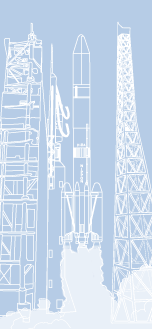 |
 |
 |
 |
 |
 |
 |
 |
 |
In Japan, under the Ministry of Education, Culture, Sports,
Science and Technology, there is an organization called the Space Activities
Commission, which determines the direction of future space development. JAXA
plays the main role in realizing the goals set by the commission.
After the H-IIA
F6 accident, JAXA formed an Accident Investigation Team, which was overseen by
the Space Activities Commission. The investigation team looked not only at technological
issues but also at organizational structure. The commission held special meetings
to develop recommendations to JAXA and to related manufacturing companies regarding
their management and organization.
|
 |
 |
Post-accident to March
Analysis of flight data
Inspection demonstration and simulation analysis
Examination of the cause of abnormal phenomena using FTA
*(Fault Tree Analysis) Study of design improvements |
*One of the methods used to analyze
safety and reliability
of a system.
It extracts cause by unfolding the sequence of a malfunction
on
a tree diagram. |
| February 18
|
Combustion test using a life-size motor |
December 31
to March
26 |
Search for
the failed solid |
| June 9 |
9 Completion of the accident investigation
status report |
|

To
ensure reliable space development, the causes and process of any accident have
to be explained. Though it took almost six months to complete the report, this
was actually done faster than usual - a time period comparable to accident investigations
in other countries.
Over the six months, investigators developed hypotheses, ran
tests using life-size equipment and computer analysis, and arrived at an explanation
based on logic and technology.
Space Activities Commission
Investigation of the cause of the launch failure of H-IIA F6, and proposed countermeasures (Japanese only)
 |
|
 |